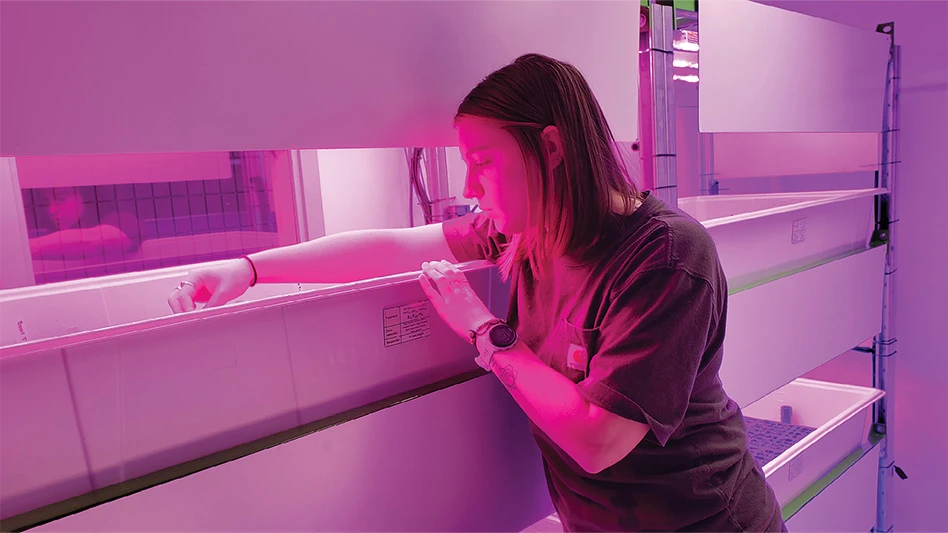 When profit margins are tight, companies look to fuel, fertilizer, growing media and other essential resources as places to cut expenses. However, these usually aren’t the best inputs to try to save money as they form the basis for production. Lowering greenhouse temperatures to save on fuel expense can actually increase a crop’s overall cost. Purchasing a lower-quality growing medium or fertilizer can be disastrous unless major production management changes accompany the changed sourcing for production inputs.
When profit margins are tight, companies look to fuel, fertilizer, growing media and other essential resources as places to cut expenses. However, these usually aren’t the best inputs to try to save money as they form the basis for production. Lowering greenhouse temperatures to save on fuel expense can actually increase a crop’s overall cost. Purchasing a lower-quality growing medium or fertilizer can be disastrous unless major production management changes accompany the changed sourcing for production inputs.
Another aspect of resource management is documenting a company’s carbon footprint. The utilization of resources significantly impacts the carbon footprint of any company. If a business wants to be seen as a “green” or “sustainable” company, it must have an understanding of how its own carbon footprint works. The use of benchmarks applied to resources can give a company the data it needs to accurately describe its carbon footprint and the steps it needs to take to reduce it.
Monitoring resources
The first step in monitoring resources is to itemize a company’s inputs. This includes water, electricity, growing media, fertilizer, fuel consumption (heating and transportation) and time.
There are different goals for individual metrics. Water, fuel and electricity are all related to community conservation and economic impact. Basic crop inputs, labor and time are related more to internal efficiency. Tying resource metrics to money and economic impact changes the dynamic. Assessing and reporting resource usage in relation to tax income generated and number of jobs maintained gives meaning to the metrics that decision makers will appreciate. From this base data, a company can track its own progress while developing essential talking points and establishing its “green” credibility.
Customize metrics
There are dozens of relationships between information and product that could be assessed. That is why it is necessary to customize the metrics to a company’s situation and needs. For electrical assessment, most companies already have meters installed. For water, most greenhouses in the United States have yet to install flow meters. It is best to install a flow meter in each bay, section or greenhouse. This allows for crop-by-crop assessment, and the assessment of individual growers if this applies.
Composting can be easily measured by placing compost eligible materials in 50 gallon drums and then tracking the number of barrels that are dumped on the compost pile each week. If drums are used, the shrink from individual greenhouses, bays or sections can be accurately assessed. On a larger scale, estimate the cubic yards of compost with geometry.
The first step to understanding a company’s carbon footprint is to map the resource-use structure of the business. This can include everything from kilowatt hours of electricity used to the miles driven by employees.
The second step is to calculate the company’s carbon emissions. This is not easy to do. There are many firms that charge significantly to calculate the conversion of gasoline or electricity into tons of carbon emissions per unit.
There are a few companies that provide online resources and assistance that do not cost anything, including Carbon Trust. The Carbon Trust website offers a conversion publication (#clt085) that enables a company to do many of the calculations to determine its emissions. A carbon footprint calculator is also on this site that allows a company to plug in its base numbers once the initial conversion math is done. This enables a company to create a sound basis to report its carbon footprint. Once a company obtains the calculations, it becomes easy to track its carbon footprint year after year.
Determining carbon emissions
The next thing that needs to be done is to establish a grower’s direct and indirect carbon emissions. It is important to divide these up as they impact a company’s assessments. The fuel used to heat a greenhouse and run delivery trucks is considered a direct carbon emission. The gas employees use or the gas used by trucks delivering products to the greenhouse are considered indirect emissions.
The carbon it takes to produce raw materials, such as plastic greenhouse film, is not one of the grower’s emission sources. This carbon assessment is associated with the raw material producer. However, the producer/supplier from which a grower buys the raw materials is part of the grower’s carbon assessment. A local producer/supplier has a lower footprint due to the closer delivery than one 1,000 miles away. Considering this, car pooling by employees reduces a grower’s indirect emissions. The reduction in fuel used after installing a heat curtain reduces a grower’s direct emissions.
The bottom line is that external stakeholders such as lawmakers, regulators and consumer groups will be interested in whether or not a grower reduces emissions per unit produced or per annum and if the grower is participating in programs or efforts to reduce indirect emissions. These reductions can be linked to dollars of tax benefits or jobs to underscore not only the grower’s “green” efforts, but also the economic impact the grower’s carbon emission is generating for the community. This dual approach to benchmarking a grower’s sustainable status makes these efforts invaluable when the company is enhancing its market position, defending against scrutiny and when recruiting employees and new customers.

One of a company’s goals is to reduce or maintain the carbon emissions per unit of output or dollar of tax paid. It is alright if the number of tons of carbon dioxide increases as long as it is in proportion to a quantifiable increase in production or tax contribution. What is undesirable is to have production go flat and emissions go up.
Additional metrics
The eight metrics discussed can show that a grower cares about the environment, its carbon footprint, community impact and efficiency. A search of the Internet will yield additional metrics that can be used by growers to have an impact on the environment and a company’s carbon footprint.
From an internal perspective, this exercise forces employees to think about waste reduction, car-pooling, water conservation and recycling as job-related expectations, rather than philosophical nuisances. If a greenhouse owner tracks these metrics, they can be shared with employees. If one of these metrics increases rather than decreases, it is costing a company money — both profit and hard-earned public relations capital.
Paul Thomas is professor and extension specialist, University of Georgia, Department of Horticulture, pathomas@uga.edu. Charles Hall is professor and Ellison Chair in International Floriculture, Texas A&M University, Department of Horticultural Sciences, charliehall@tamu.edu.

Explore the December 2010 Issue
Check out more from this issue and find your next story to read.
Latest from Greenhouse Management
- USDA fires experts on invasive pests, including Asian citrus psyllid, chilli thrips
- CEA Alliance celebrates bipartisan introduction of Supporting Innovation in Agriculture Act
- Dümmen Orange North America celebrating 25th anniversary in 2025
- CEA HERB Part 1: Best management practices for culinary herbs
- Lawsuit challenges new H-2 visa rules
- CEA HERB Part 2: A guide to increasing the sowing density of culinary herbs
- Illinois Landscape Contractors Association changes name to Landscape Illinois
- 2025 Proven Winners Horticulture Scholarship applications now open






